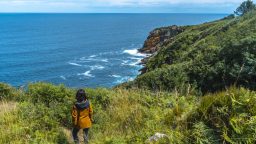Choosing the best time to visit Hawaii for fewer crowds comes down to travelling during the island chain’s quieter shoulder seasons, when flights and accommodation are more affordable, beaches feel spacious and you can enjoy popular attractions without battling peak-season congestion.
Embracing the Late Spring Calm
One of the best times to visit Hawaii for fewer crowds is late April through early June. This window follows the busy spring break period, leaving hotels and beaches noticeably quieter. The weather is reliably warm, rainfall is moderate and ocean conditions are excellent for swimming, snorkelling and boat tours. With fewer holidaymakers around, you can secure better rates on accommodation and enjoy a more relaxed pace in places like Waikiki, Lahaina and Poipu.
Travelling in late spring also means shorter queues at national parks and easier access to sunrise reservations at Haleakalā or timed entry slots along popular coastal hikes. The islands feel more open, making it an ideal period for travellers seeking calm without compromising on sunshine or activities.
Taking Advantage of the Early Autumn Lull
The second prime period is September to mid-October, widely considered the best time to visit Hawaii for fewer crowds if you prefer warm water and long beach days. Summer tourism drops sharply once school begins, but the weather remains some of the best of the entire year. Water clarity peaks, making this a superb season for snorkelling with turtles, manta rays or exploring coral gardens.
Accommodation prices fall again after the summer rush, and many local festivals take place during this period, offering a more authentic cultural experience. With gentler visitor numbers, the islands’ most scenic drives—such as the Road to Hana or Kauaʻi’s Hanalei Valley—become far easier to navigate.
Avoiding Peak Seasonal Pressures
Understanding when not to travel is just as important when choosing the best time to visit Hawaii for fewer crowds. Mid-December through March brings a combination of winter holidays, whale-watching season and North American travellers seeking warmth, resulting in packed beaches and higher prices. Summer, especially July, also experiences a surge in families and students, making popular attractions noticeably busier.
While these peak times still offer wonderful weather, they lack the breathing space that defines a quieter Hawaiian escape. Avoiding these high-traffic months gives you more flexibility and ensures you experience the islands in a more peaceful state.
Making the Most of Your Visit
Travelling during the best time to visit Hawaii for fewer crowds also allows you to enjoy iconic experiences without rushing. Sunrise at Lanikai Beach feels more intimate, snorkelling at Hanauma Bay is less congested, and parking at trailheads—often a challenge in peak months—becomes significantly easier. Restaurants and local food trucks are calmer too, allowing you to enjoy regional cuisine without long waits.
Booking activities earlier in the day further reduces crowd exposure, as many visitors prefer mid-morning starts. Exploring beyond the main resort areas—west Oʻahu, upcountry Maui, or the east coast of the Big Island—adds even more tranquillity to your itinerary.
Choosing the best time to visit Hawaii for fewer crowds transforms your journey into a more serene, spacious and rewarding experience. With a little seasonal awareness and thoughtful planning, you can enjoy the islands’ natural beauty, culture and coastline in their most peaceful form, and turn your Hawaiian holiday into a relaxed and memorable escape.





